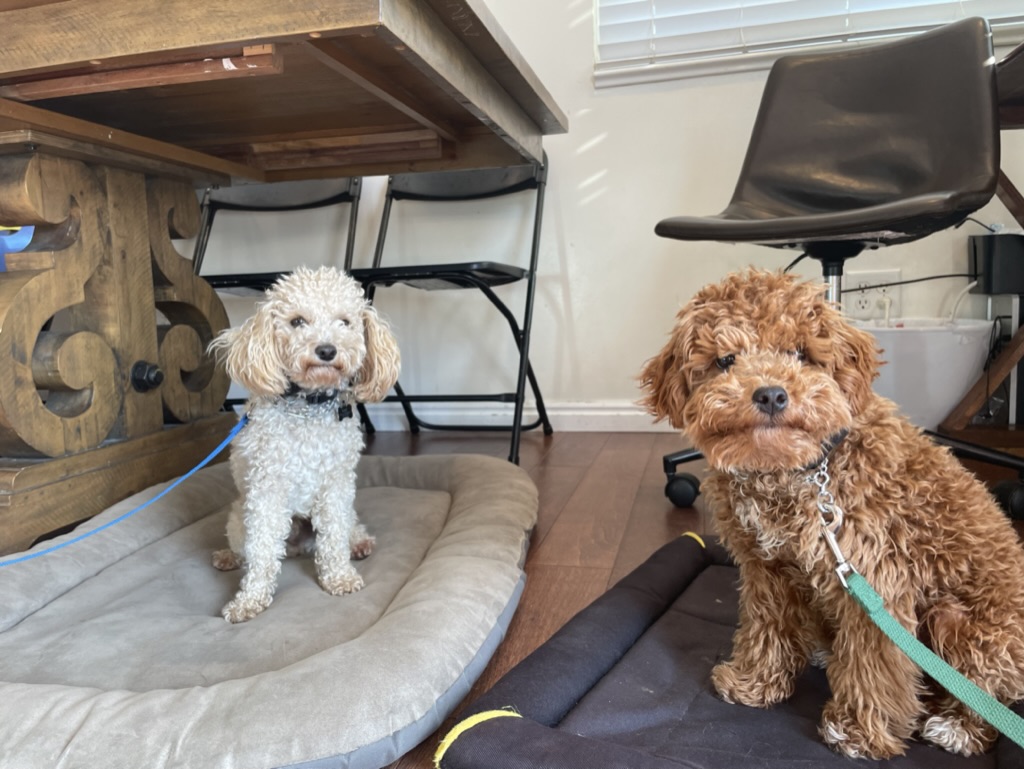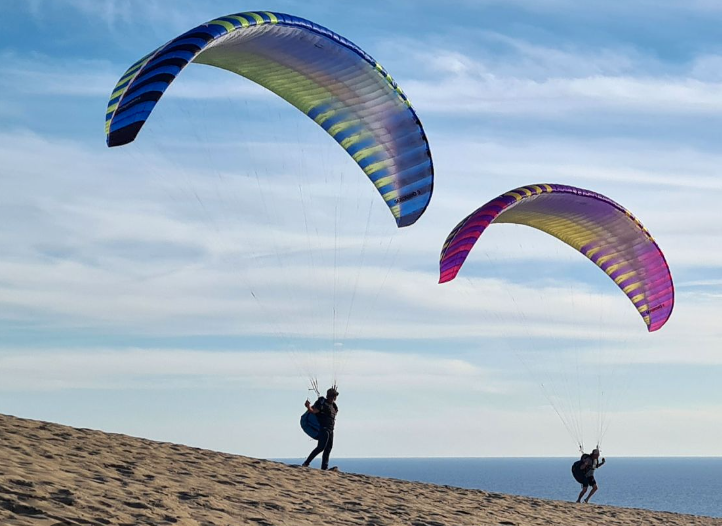Puppy Training Principles Podcast
Episode 80: The Tools Trap

Dog-Training Tools
Don’t let tools become a crutch. Throughout the training process, allow your dog to make more and more decisions and use the tools to back up guiding them in the right direction. Gradually back off from the tools, until you find you don’t need them anymore.
When it comes to dog training, the tools we use are a big deal. They’re a major part of the training process, no matter what tools you choose to work with (food included). There is a lot of controversy over them. What are good tools? Which are bad? What’s humane, what isn’t?
We hear these arguments over and over again. But that’s not what we’re here to discuss today. Today I want to explain how tools often become a crutch in training our dog. The tools trap. Instead of getting us where we need to be, it becomes what we always HAVE to go back to.
We Will ONLY Use Slip Leads Today
One day when I was working with my mentor, Ty Brown, we were working at his dog-trianing facility. We had just started into our regular routine that morning to work with the dogs when Ty surprised us all when he announced, “Today is a NO TOOLS day. You can only use a slip lead.”
A slip lead is simply a rope that loops back over to itself. It’s usually connected back on itself with a simple metal loop that “slips” back and forth, allowing the loop to tighten or loosen. Trainers use the tight/loose technique in using a slip lead to communicate with a dog. I’ve seen many vets, showdogs, and trainers use them in working with dogs.
So Ty was having us use a slip lead only that day. He wanted us to be more exact with our technique and not have the tools be a crutch to us communicating with the dogs.
Any Tool Used Incorrectly is a Bad Tool
That day, we used no other training tools like prong collars (this is the prong collar we use) or ecollars (this is the ecollar we use), both of which are great tools if you know exactly how to use them. Any dog-training tool can be a bad tool if used incorrectly. Really ANY tool that you don’t know how to use is a bad tool.
If I don’t know how to use a nail gun and I try to use one for cooking, I could write off the nail gun as a “bad tool”. But in reality, I just need to know how to use it and apply the tool in the correct way.
Sometimes certain tools get a bad wrap. I don’t like hammers when they’re used for violence, after all. But boy do I love a hammer when I need to connect two pieces of wood with a nail!
Why Only a Slip Lead That Day?
So here we were needing to work with all these dogs using only a slip lead. Some of these dogs had severe anxiety, some had been dog agressive, some human agressive and it was kind of intimidating to have only a slip lead to work with these dogs.
But the reason Ty was having us do that was sometimes we get too dependent on a certain tool that we like to use. We can kind of fall into just using the tool we’re comfortable with.
Tool-Heavy Beginnings in Dog Training
When you first start training with your dog, it’s always going to be more tool-heavy at the beginning. But the goal is always to be building a strong, positive relationship with your dog through the training process that can, over time, step away from the use of tools. We want to be able to phase them out almost completely.
We always encourage dog owners to keep the tools so you can use them if you’re ever needing a refresher or you know you’ll be in a challenging and new situation, like going on a new hike or traveling.
Although the proper use of tools in dog training is essential for great results, they can sometimes become a crutch. When they’re a crutch, they are relied upon too heavily whereas we really want the tools to simply be a means to an end.
Ensure Dog-Training Tools Don’t Become a Crutch
So how do we avoid a dog-training tool becoming a crutch? We use it only as needed and focus on building strong communication and relationship with our dogs.
Just as we teach in our training programs, when giving direction to your dog, let there be a small space where the dog is given the opportunity to choose. We give direction, then allow a choice. Or we give correction, then space to allow a choice. If the dog makes a bad choice after being given direction, we are going to let them make it and then quickly guide them back in the right direction.
With enough consistency, your dog will learn to think through what you are asking and actually make the choice to follow. We allow them to use their brains. And if they make a poor choice, we consistently ask for and communicate that we want them to choose a better way.
If, on the other hand, you force correct behavior with a lot of physical direction and no space to allow your dog to think through making a choice, pretty soon your dog’s brain is going to disengage. Why would they put in the effort to think through what you’re telling them to do if you’re going to physically guide them there within a split second anyway?
Learning to Paraglide

I have recently been learning to paraglide. I’ve been taking lessons for months now. I’m loving it!
At the beginning of taking lessons, my teacher was telling me every single little thing to do. As I began to fly on my own, my teacher used a radio to communicate with me. He was giving me direction nearly every second. Turn this way, turn that way, look over your shoulder this way, pull your wing that way. He was giving me second-by-second instruction as this was all new to me.
And that’s good! It’s what I needed. But as time goes on, my teacher will give less instruction and let me figure things out on my own with him to guide me when I need it. After all, the ultimate goal is for me to be able to launch off a mountain and land on my own with no teacher talking in the radio.
From Second-By-Second Guidance to Space for Decisions
Dog training is no different. At first, your trainer is telling you every little thing to do. At the same time, your dog is getting lots of feedback and direction for every small step along the way. It’s all new to both of you!
However, if we keep doing that exclusively, we actually stunt the growth of the learner because they stop thinking for themselves.
Instead, we want to gradually give them more and more opportunity to think through their choices and BECOME the dog we know they can be, not just go through the motions as you direct them.
Parenting Feedback
It’s something I’m concerned about as a parent. When they’re really young, kids require more feedback, help, and direction. But if I continue to give them that same level of feedback through their teenage years, they won’t be learning to handle life on their own when it’s time to leave the Robbins nest. They will not have practiced making decisions on their own.
It’s really no different with our dogs. In the training process, we will be tool heavy at first as your dog learns new skills and is learning to understand what you’re asking. Then once they know what the command even means, we are going to gradually start backing off from using the tools so much and allow the dog to make more decisions on their own.
Keep doing that until all of the sudden you realize you aren’t needing to use the tools anymore to communicate.
Becoming Tool Free
That’s what we want to do in all our training programs. We want to give less and less feedback so the dog can make the decision on their own. That allows them to grow into the training and the feedback instead of us always having to give the feedback and direction for every step to take.
If you are ever in the situation of your dog doing great while training, but as soon as you take away the tools (the leash, the collar, the food, etc) the dog won’t do any of it, then you know you still need more time using the tools. But as you continue training using those tools, allow more and more space for the dog to make decisions with you there to guide them back if they make a poor choice.
Realize your dog is in the process of becoming. And in order for the dog to truly become the best version of themselves, they need the safe space to make decisions with you there watching, ready to guide them in the best direction.
To Sum it Up
Don’t let tools become a crutch. Throughout the training process, allow your dog to make more and more decisions and use the tools to back up guiding them in the right direction. Gradually back off from the tools, until you find you don’t need them anymore.
Podcast Show Notes:
Jason discusses the tendency to rely too heavily on the tools we have instead of allowing the dogs to mess up a bit and learn!
2:10 If we use a tool incorrectly it can be a bad tool
3:05 The beginning of training will be tool heavy. The ultimate goal is to wean them out, when the dog shows they are ready.
5:32 We want the dog to think it through and not just go through the motions. Back off the tools and let them make the decision on their own.
+ show Comments
- Hide Comments
add a comment